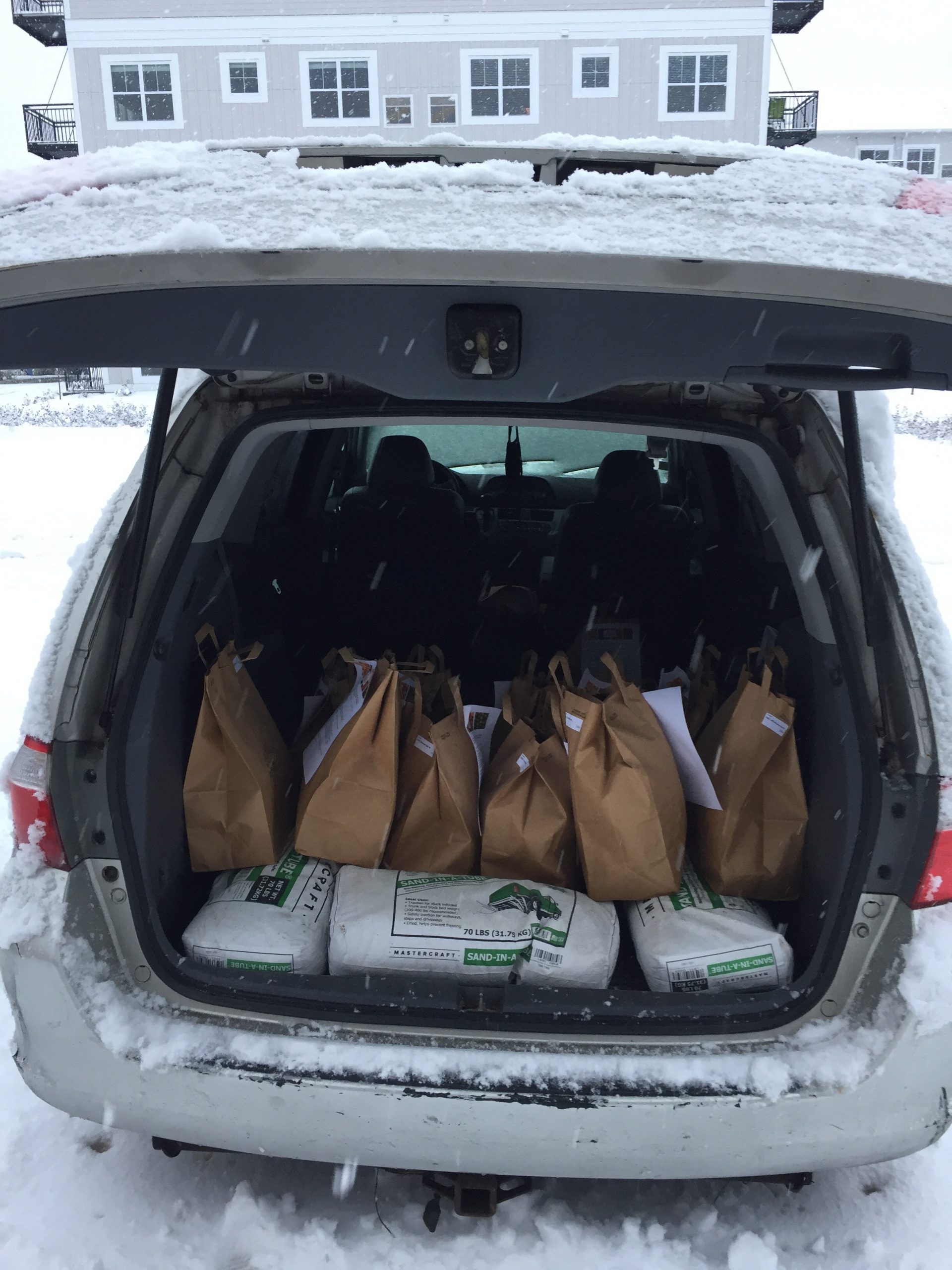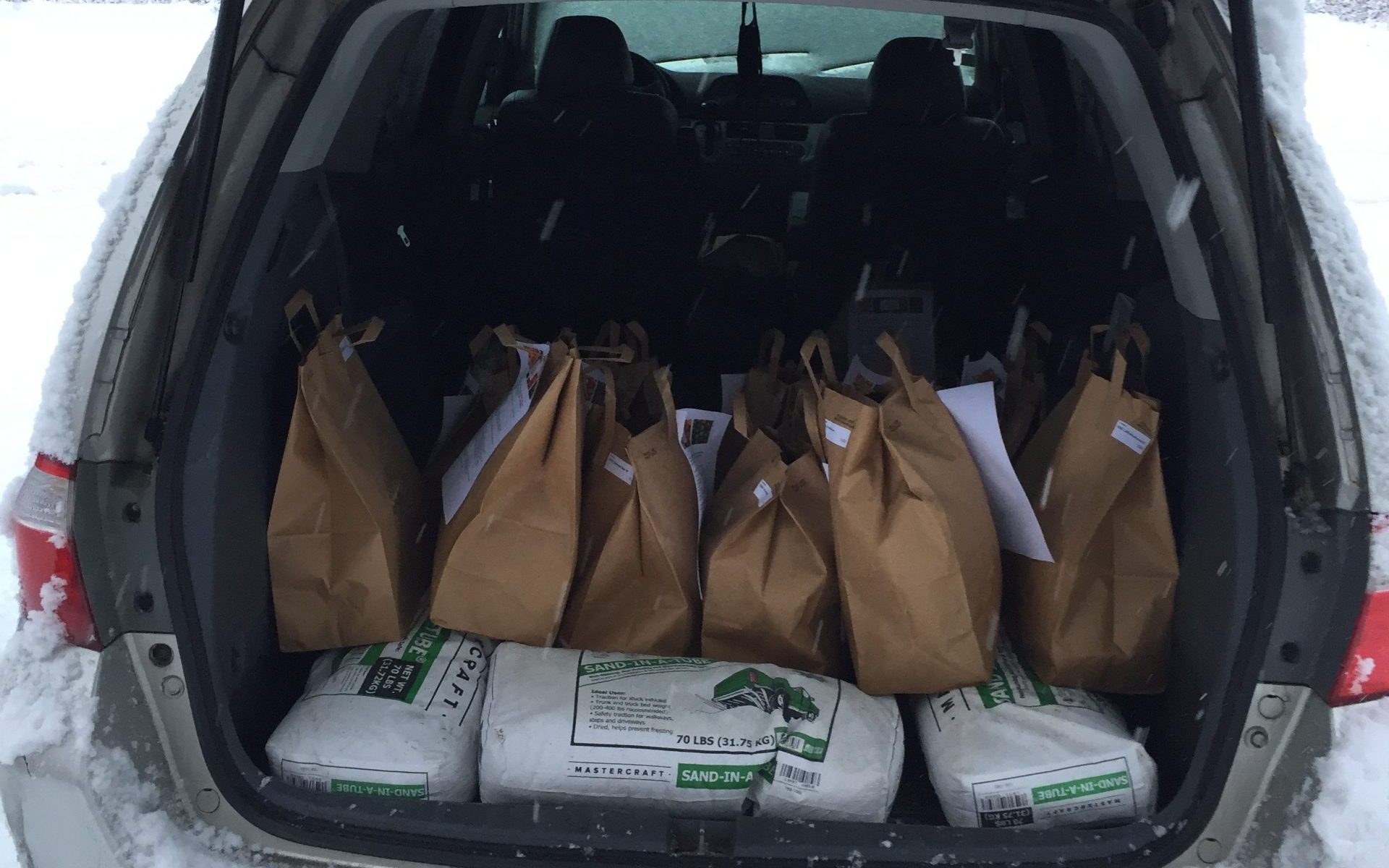
After officially separating from St. Thomas in late Summer of 2020, Brightside Produce, an organization that distributes fresh fruits and vegetables in low-income Twin Cities neighborhoods, faced new challenges and had to adapt its business model to survive.
Although the decision was made in a joint agreement, breaking away from St. Thomas had negative impacts for Brightside’s operations, requiring the organization to launch new programs and borrow vehicles to keep delivering produce.
Besides losing customers and therefore income, which allowed Brightside to function, it lost access to the St. Thomas vehicles that were used for the produce distribution.
“We had a vehicle donated to us by one of the students who worked closely with Brightside, which was essential,” Brightside Director of Operations Paul Youngblood said.
The donor, delivery driver Maddy Flisk, said she decided to provide the car because she was not currently using it due to the pandemic.
“We were in a pretty tight spot, so I knew the van would definitely make things easier and allow us to continue in the pandemic,” Flisk said. “We were concerned about keeping the deliveries going and I thought it was really important.”
Karl Butter, a staff member and St. Thomas alumnus, also helped by lending a truck to Brightside while the organization looked for a long-term option.
“[They] were not quite spacious as the cargo vans that we were used to, but made things work doing that. We had unbelievable reliability and some core volunteers to make things going,” Youngblood said.
Even though the issue of mobility was solved, Brightside still needed to reorganize and rebuild its business model from scratch. Without the money from the joint initiatives with St. Thomas, Brightside initiated a new Home Delivery program weeks after the separation was implemented.
“This Home Delivery program was delivering … excess produce to homes around St. Paul and Minneapolis,” Youngblood said, “and people would pay for the produce, a delivery fee, and a ‘food justice charge,’ which was four dollars for a bundle every week.”
This, Youngblood said, was important for keeping the business afloat.
“That was what kept us profitable because we were not making any money off of the store deliveries that we did. And that started out with maybe 10 to 15 homes and I think today it’s 175 homes,” Youngblood said.
In the final three months of 2020, Brightside received a $90,000 grant from the CARES Act to deliver produce to food insecure residents of the Ramsey County area. After the money was used up, the nonprofit started a Pay What You Can program to continue supplying healthy food to the families they served.
“We delivered produce on Sunday afternoons to people and they would be able to pay whatever they were able to that week,” Youngblood said. “So those customers are paying anything between one-12 dollars for something that they would get at the grocery store for 25-30 dollars. And that program is up to 75 people.”
Although food deserts increased during the pandemic because of job loss, hindering people’s access to healthy, nutritious food, Brightside shined a light on the program’s clients, who often send messages saying how much they appreciate the service.
One customer who was connected to Brightside by another organization that could not deliver produce to her because of where she lived thanked them for supplying “all these new foods” she was now able to try, Flisk said.
“We would get text messages or emails from those families saying that their kids loved going into the living room and unbagging the produce every week, like a Christmas present,” Youngblood said.
Brightside was founded in 2014 when St. Thomas and Community Table Co-op collaborated to distribute produce to corner stores in underserved neighborhoods and combat food deserts, which are areas that lack the supply of healthy, nutritious foods to their residents.
Brightside was created after Minneapolis passed a Staple Foods Ordinance requiring grocery stores to stock produce, which was not financially sustainable to small grocery store owners, Youngblood said.
“The cost of the produce itself and the time spent retrieving it resulted in a loss for the store owners, for the most part,” Youngblood said. “So while the Staple Foods Ordinance was good on paper, it was not helpful for the stores that were not often selling well. Brightside met that demand by buying produce in bulk and delivering it to those stores.”
Before the separation between Brightside and St. Thomas, the nonprofit sold produce in Summit Marketplace and offered a buyer’s club, a program that allowed students, campus offices and professors to purchase leftover fruits and vegetables for a low price.
However, because St. Thomas was unable to keep up with Brightside’s growth and innovation, they decided together to end their partnership, a process that took months to be finalized.
“We worked together for a very long time and at a certain point we just were not working together as well as we used to,” Youngblood said. “We felt like it was time for Brightside to take on its own identity as a nonprofit.”
Luana Karl can be reached at karl2414@stthomas.edu.
This story was updated Monday, May 24.

